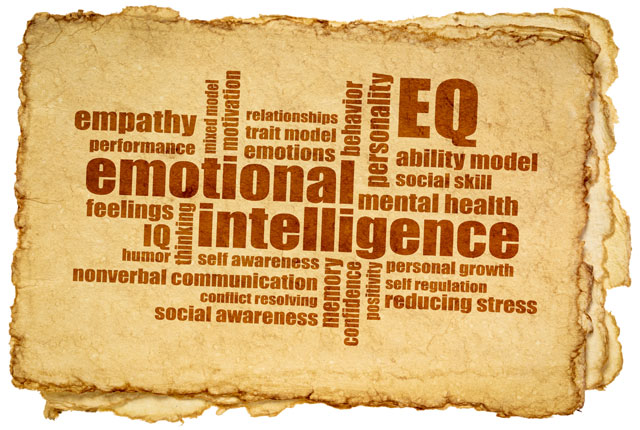Few issues have stirred greater controversy in Americans' attitudes toward public education than the role of religion and values in public schools.
A. Religion: A Faith that Works
When we consider the idea of religion and its dissemination through education, we encounter a range of differing opinions, both in part because the topic is personal and controversial and also because it is an ambiguous idea that ironically is hard to define and can take on a range of meanings based upon specific beliefs.
B. What Is Religion?
In an essay entitled "What is religion?" author Paul Connolly responded by saying, "There are several problems in trying to make a definition of religion that is not overly vague and general, but that still is inclusive enough to not leave out any of the beliefs and practices that seem religious to most intelligent people."
In the same essay, Connolly presents the conflicting notion that religion is everywhere; hence, religion is an innate instinct, and while at the same time, it is also highly diverse, being acquired through socialization processes.
Connolly goes on to resolve this quandary by stating, "Religion always begins in an experience that some individual has or that some small group of people share."
Thus, as Connolly surmises, "Religion originates in an attempt to represent and order beliefs, feelings, imaginings, and actions that arise in response to direct experience of the sacred and the spiritual."
He goes on to explain that as one experiments with religion, both in terms of its formation and enhancement, it evolves into a rewarding practice, that if honored on a regular basis, continues to offer personal fulfillment through initial experiences and sustained, continual responses.
From Connolly's overview and assessment, we are able to gain a definition of religion that, while functional and concise, serves to relate the manner in which it forms and manifests meaning in people's lives.
"Religion: Human beings' relation to that which they regard as holy, sacred, spiritual, or divine." -- Napoleon Bonaparte
C. Religion: Focusing the Definition
Interested in learning more? Why not take an online Sociology course?
As understood, religion as a whole is a large, complex entity.
Hence, for our purposes, we will narrow the focus of religion to that of a structure organized for the purpose of explaining the existence of one specific god (monotheistic), multiple gods (polytheistic), no god (atheists and agnostics). This includes the scientific and historical findings supporting the general premise and methodologies used to integrate the specific practice in one's life and allow one to follow its principles on a regular basis.
The majority of faiths recognize their basic unity and purpose and, as such, are able to point out the differences between them and other formalized religions.
It has been said that in order for a religion to be great, it must have noble teachings and lofty moral goals.
The major religions practiced in the world include Islam, Judaism, Hinduism, Buddhism, Christianity, and the Philosophies of the Chinese.
All of these teach a doctrine of salvation, meaning that they stress salvation as being the highest goal of the faithful and that all followers should try to achieve this by honoring an established code of conduct, which is a set of moral teachings and values that all religions have in some form or other.
Varied reasons why people practice particular religions include the following:It offers a feeling of security and relief because followers believe that a divine power watches over them and will always protect and assist them.
It promises salvation and either happiness or the chance to improve in life after death. It brings a sense of individual fulfillment and gives a meaning to life.
It provides answers to such questions as: "What is the purpose of life?" "What is the final destiny of a person?" "What is the difference between right and wrong?" "What are one's obligations to other people?"
Finally, people follow a religion to enjoy a sense of kinship with their fellow believers. "What are the Sacred and the Spiritual?"
|
D. Religion versus Spirituality
To support the previously presented idea of religion, the two terms that must also be employed are "sacred" and "spiritual."
Distinguishing between the two terms are the central themes of origination and continued practice.
First we will define sacred. Used as an indication that an experience is not ordinary or usual, sacred, though of slightly different connotations, is also frequently referred to as "holy" or "divine."
A mysterious materialization of power and presence that is experienced as capable of transformation and of primitive qualities is known as a sacred act.
The component of sacredness we emphasize is that it accompanies an incident when it is experienced for the first time or captures the feeling of starting anew or creating a break from the everyday.
|
"Your breath (your spiritual nature) is given to you by the Creator. You cannot make yourself breathe, nor can you will your breathing to cease. You are intimately connected to the One who gave you the breath and every time you inhale and exhale, your spirit longs for a deeper relationship with that One who is beyond your wildest imaginings." |
Simply put, we can say that spiritual concerns relate to the shifting border between self and others, or self and world. A spiritual time frame is ongoing and recurring with regular practice.
E. Passing on Religion
Since prehistoric times, the teachings of religions have shaped the lives of people. Either from generation to generation or as a product from some outside body, religion performs a vital, perpetual purpose in society, that of the continuation of a group's beliefs and teachings.
Once children begin to attend school, they are faced with more formalized education where religion is concerned. If attending a niche school specifically suited to their family's religion, children will learn a great deal more about their cultural affiliations.
However, should the child attend a school composed of a more mainstream population, they are likely to be educated in a more general manner on the subject of religion, if, in fact, religion is addressed at all.
F. Religion: Education in School
The First Amendment to the Constitution reads, "Congress shall make no law respecting an establishment of religion, or prohibiting the free exercise thereof; or abridging the freedom of speech, or of the press; or the right of the people peaceably to assemble, and to petition the government for a redress of grievances."
While freedom of religion is one of our treasured rights as citizens of the United States, when it comes to the religious education of children in public schools, a maelstrom of debate has arisen.
This is because, in the past, religious education inclusive of saying prayers, Bible reading, and specific religious studies, did occur.
H. Guidelines by Objectivity, Accuracy, and Balance in Teaching about Religion (OABITAR)
Providing additional direction for educators are the guidelines by Objectivity, Accuracy and Balance in Teaching about Religion (OABITAR). Complementing the aforementioned set of dos and don'ts, the following is a sampling of the content:
































